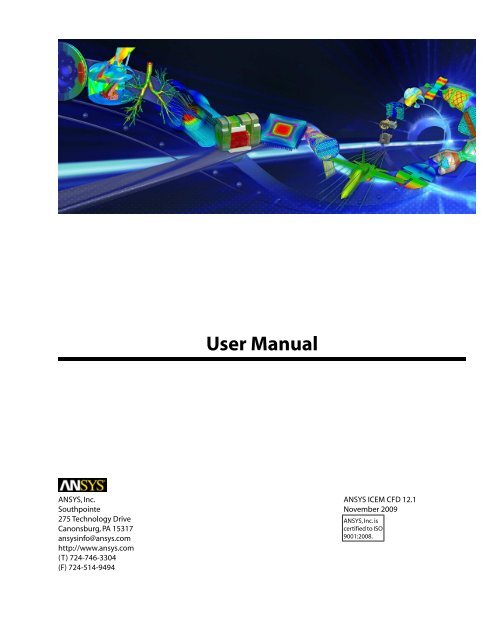
Each part can then be controlled for meshing, visualisation or various other purposes and is stored within the aforementioned tetin file. Geometrical entities which may include points, curves and surfaces must also be associated to a given part. Green: curve not attached to any surfaceĪn analysis post building the topology is then required, whereby if it is clear a curve is supposed to share two surfaces yet is being displayed as yellow, a hole exists and it is likely there will be meshing problems.BLUE: curve shared by more than two surface.YELLOW: curve attached to a single surface.

The following is the colour coding in ICEM CFD, after the BUILD TOPOLOGY option has been implemented: Holes are typically identified through the colour of the curves. Existence of holes would mean that the algorithm which generates the mesh would cause the mesh to 'leak out' of the domain. It means if there is a source of water inside a region, the water should be contained and not leak out of the BODY.Īpart from the regular points, curves, surface creation and editing tools, ICEM CFD especially has the capability to do BUILD TOPOLOGY which removes unwanted surfaces and then you can view if there are any 'holes' in the region of interest for meshing. These maybe present due to differences in geometrical and meshing tolerances.There is hence an emphasis in ICEM CFD to create a mesh that has a 'water-tight' geometry. Negative volume elements are not permitted in external solvers. Regardless of this, the geometry should be checked using the geometry analysis to ensure the model contains a closed volume, meaning there are no holes or gaps within the geometry, so that further down the line, no negative volume elements are present. For simple geometries the former tends to be used and for more complex geometries the latter is often used. ICEM CFD allows for its geometry to either be made using its own geometry topology package or to import geometry via external CAD software. Replay (*.rpl): This file consists of the replay script.Journal (*.jrf): This file consists of the record of the operations performed.This is hence only ever apparent in Cartesian grids. Cartesian (*.crt): This file consists of the information regarding the Cartesian grid.This data is then passed onto the attributes file. Parameters (*.par): This file consists of the mesh independent data such as material properties, local coordinates and run parameters.Attributes (*.atr)(*.fbc): This file consists of the mesh dependent data specified during any edge, surface or vertices association as well as data for parts, element properties, loads and constraints of the mesh.Blocking (*.blk): This file consists of the framework used to create a structured mesh with the details of each individual block.The shell mesh elements contain triangular and quadrilateral elements whilst the volume mesh elements contain hexahedra, pyramids and prisms.


#Ansys icem cfd sample files series#
The series of file types contained within the working directory are: Every project will contain a series of file types dependent upon the mesh type and structure. It is possible to either create or open a pre-existing project.


 0 kommentar(er)
0 kommentar(er)
